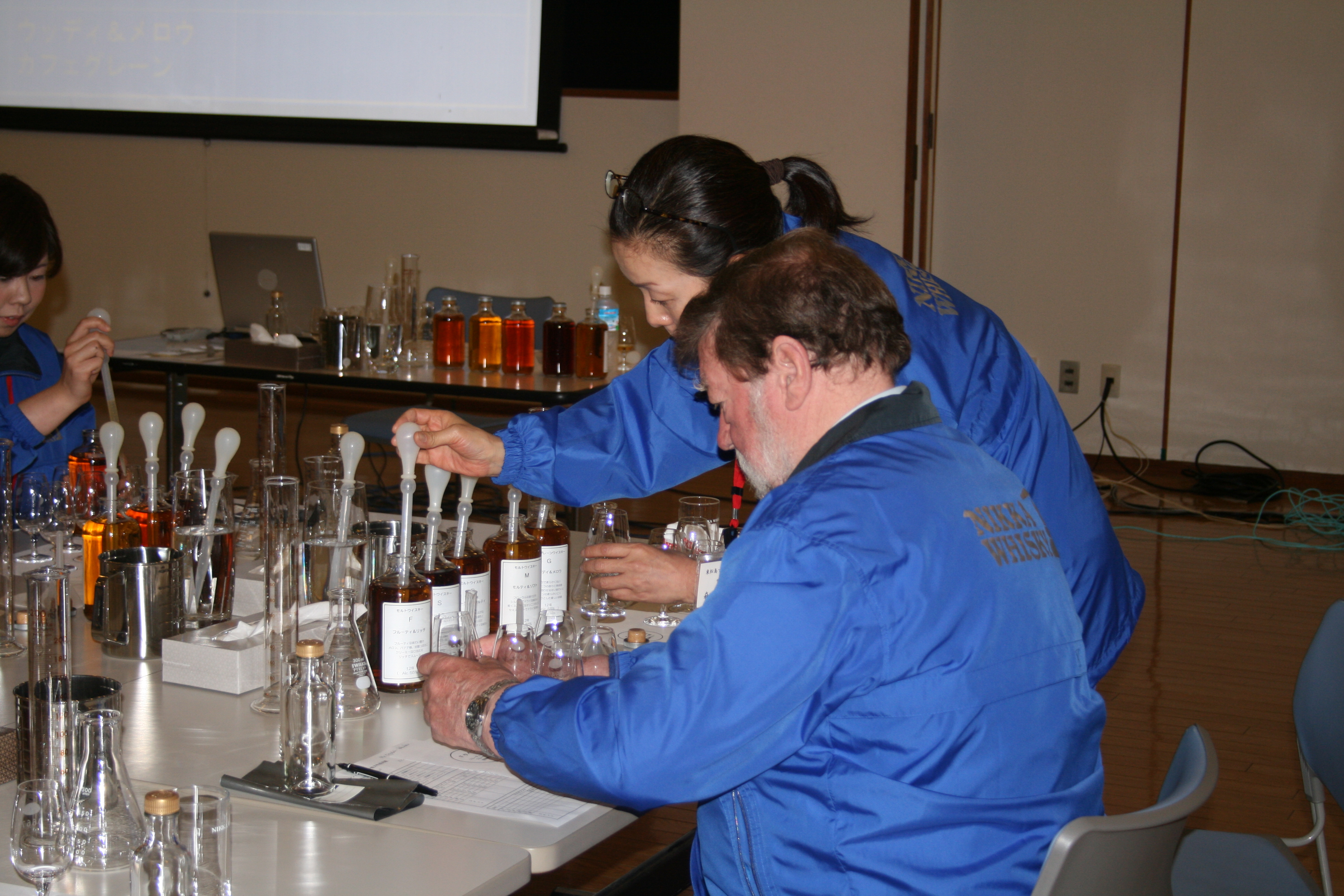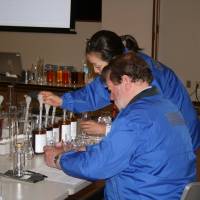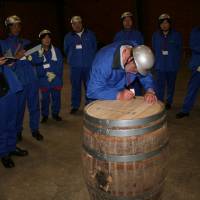Back in 1980, when I first settled in Kurohime, up in the hills of northern Nagano Prefecture, I often had to go to Tokyo to meet editors. They were good times, as those office-wallahs would take pity on young struggling authors and use them as an excuse to visit bars.
On the downside, at those bars I'd often overhear Japanese men pretending to be experts on all things whisky, discussing single malts, blended varieties and whether Japanese whisky wasn't too bad because it was mixed with Scottish malts. Quite obviously, most of them had no idea what they were talking about.
Thus it was, with a stroke of either luck or genius, that I suggested to a senior editor that his firm should send me to Scotland, with a photographer, to visit every distillery I could. They agreed!
The photographer I had in mind was Touru Moriyama, an excellent lensman who liked whisky (but was not a heavy drinker) — and who could drive. I soon convinced him what a fine chance this was to tour Scotland and drive through some of its truly spectacular scenery — all expenses paid. We would also take ferries to Islay, Jura and Skye, then out much further to the Orkneys.
Being an altruistic sort, I reassured Touru that I would take on the task of tasting the whiskies, thus saving him wear and tear on his liver. I also generously offered to blag some samples of the best stuff so that in the evenings, when his driving was done, he could share a few drams with me. That's what friends are for, right?
So then, in those pre-Internet times, I wrote to every whisky distillery I could get an address for before we set off together on a monthlong tour. The upshot (no pun intended) was that I wrote a series of articles and, because Touru was fond of cats and every distillery had at least one, we also published a book of "distillery cat" stories illustrated with photos of some of the felines.
Another unforeseen consequence was that I was asked to do a TV commercial for Nikka whisky, which paid enough for me to make a hefty downpayment to build the house I now still live in.
Nikka and I got on really well, but it wasn't until 1982, when I first visited their Yoichi Distillery established in 1934 by Masataka Taketsuru, the "father of Japanese whisky," about 50 km west of Sapporo in Hokkaido, that I had my first taste of a Nikka single malt — actually, several wee drams over the three days I was there. It was superb!
"You've got to bottle and sell this!" I told everyone there — but so-called marketing gurus said it would cost too much to design and make a bottle. I said they should use a regular sample bottle. Then the "experts" said that an advertising campaign would cost too much. I said don't advertise: Once the whisky was out there, I told them that whisky-lovers like me would spread the word. What about the label design, they agonized? Just print the details, I said.
So they did, and the rest (as they say) is history. Sure, the advertising company gave me the boot, but Nikka made me an adviser and also honorary curator of their Yoichi Whisky Museum.
Then I modestly came up with a brilliant advertising idea. The only thing whisky commercials, especially on television, did not show was the passing of time; the time needed for whisky to mature while paying the angels' share — the roughly 2 percent of the volume that's lost in the maturation process each year.
"Let me make a barrel of whisky," I said. "I'll take part and help with the whole process, together with your coopers, distillers, blenders and so on. Then put the barrel away and, 15 or whatever years later, film me helping to taste, bottle and label the whisky. Time will tell in our faces."
You know what? Nikka agreed to the plan and I made my first barrel of single-malt whisky in 1986 — all filmed. That first barrel was bottled on my 60th birthday, in July 2000. Unfortunately, though, by then all the people in charge of the "film-Nic-making-whisky" project had moved on, so the commercial was never put together — but as I was paid in bottles of the whisky I helped to make, I wasn't complaining. Many people have enjoyed that whisky, including members of the Imperial family, former Japanese prime ministers — and good old Bill Clinton, too.
Later, however, Nikka launched a "My Whisky" program, mostly for their distributors, which involved getting folk to make up parties to spend a day or two watching the production of a barrel of whisky, which would be bottled 10 years later. Afterward, each participant would get some of the "water of life" they helped make.
Since laying down my first barrel in 1986, I have visited the Yoichi Distillery many times (and made another barrel of single malt), but later that year I was invited to the more modern Miyagikyo Distillery in the rural Aobu district of Sendai, the capital of Miyagi Prefecture.
This Tohoku-region distillery was also established by Masataka Taketsuru, but much later, in 1969. The buildings are of red brick that even then was already starting to turn a soft black color from a fungus that thrives on alcohol — a sign the angels' share was being paid.
The grounds were wide and wooded, either from trees that had been left or ones carefully planted, and they were landscaped so people could enjoy pleasant walks, wide lawns, running streams and big ponds favored by ducks and swans.
Since the Great East Japan Earthquake and tsunami of March 11, 2011, myself and my manager Mrs. Izumi Morita, and staff of the C.W. Nicol Afan Woodland Trust in Kurohime, have all been deeply involved aiding the Miyagi Prefecture city of Higashi-Matsushima in planning and preparing for a school there to be relocated to densely wooded hillocks up above the danger line for tsunami.
It's taking about half of our time, and we visit Higashi-Matsushima regularly, talking with people, clearing brush and helping to persuade sponsors to pitch in with us. Now we have made so many friends, of all ages and from all walks of life, that it feels as if we have another family.
Meanwhile, my old friend Nikka became a part of the Asahi Breweries team in 2001, and the new parent is a generous supporter for the school and other projects. As one of the most important aspects to aid in recovery from the disaster is to believe in the future, Asahi opened its "My Whisky" program to the people of Higashi-Matsushima. As I said, to make whisky now and put it in a barrel locked away in a cool, dark place for a decade or more is necessarily to look to the future.
On June 2, I took part in this program with residents of our adopted town that lost more than 1,000 citizens and was around 65 percent inundated by the March 11, 2011, tsunami. The whisky we put down is a blend of malt and grain whiskies, all Nikka made. After it was barreled, everybody put their signature on the end of cask. Bottling will be in 2023.
If I'm around for the tasting then, I'll be 83; if I'm not, then several of the younger participants said they'll taste it for me — for which kindness I will be eternally grateful.
Whisky aside, I was delighted to see how the grounds of the Miyagikyo Distillery have come on in the 29 years since my previous visit. They have become a beautiful parkland, with fine great trees, lush green lawns — and still with ducks and swans on the ponds.
Mr. Taketsuru truly had a grand vision for the future and, along with its taste, the lovely surroundings of the distillery are the whisky's best advertisement — better than anything they could produce on a small television screen.
This is what we all need: A belief in the future — and one that takes nature into account. We must nurture nature, not just pretend to protect what is left of it. I'll drink to that.




















With your current subscription plan you can comment on stories. However, before writing your first comment, please create a display name in the Profile section of your subscriber account page.